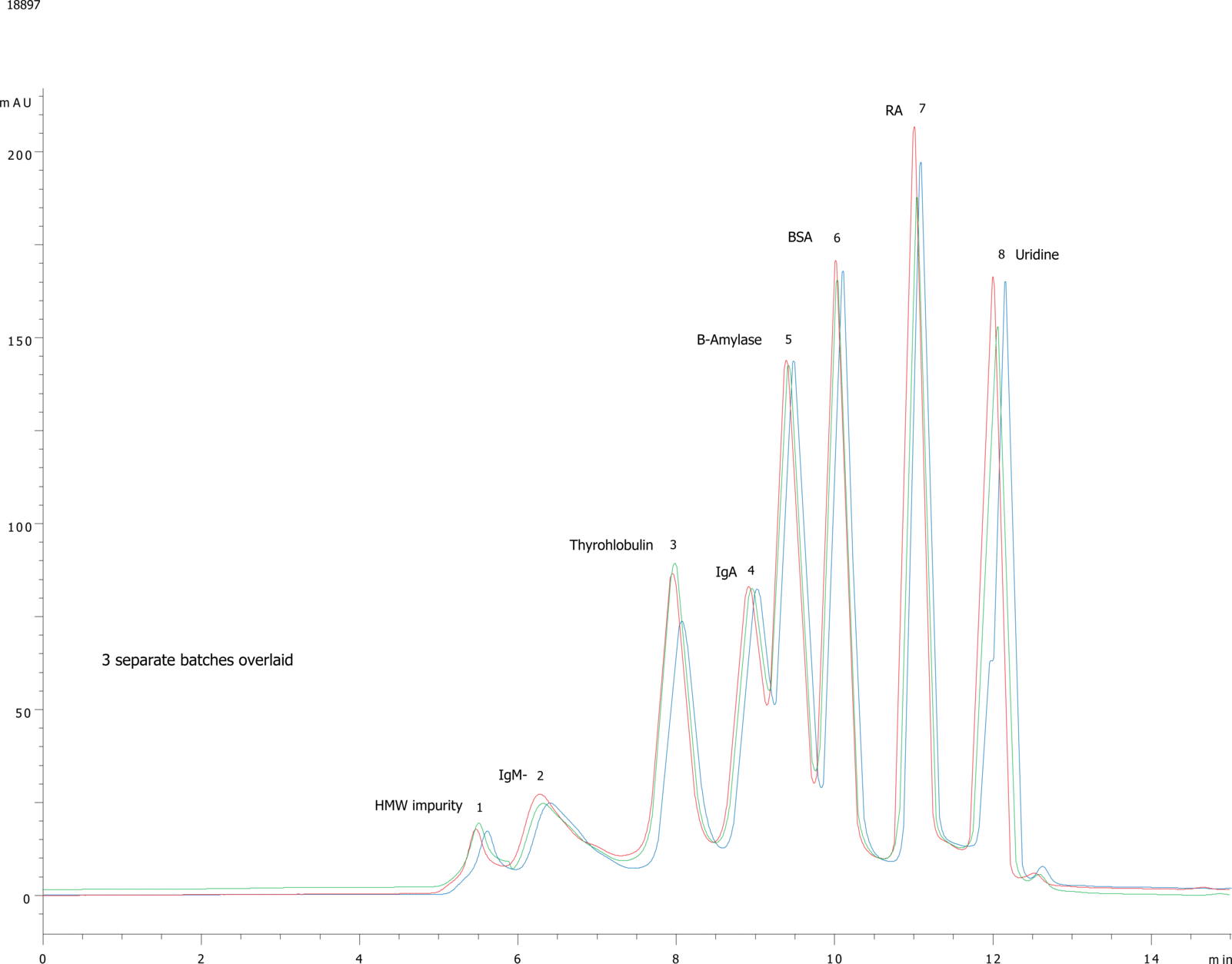| 1High MW impurity |
|---|
| 2IgM |
| 3Thyroglobulin |
| 4IgA |
| 5beta-Amylase |
| 6BSA |
| 7Ribonuclease A |
| 8Uridine |
Applications
Lot to lot variations on BioSep4000 (2)
18897
Separation Mode: Gel Filtration Chromatography (GFC)
Gel Filtration Chromatography (GFC)
SEC-s4000
HPLC
Pharmaceutical/Biopharmaceutical
Life Science
Protein
Biochemical Compound / Nutrient
Analytes
Details
LC Conditions (App ID: 18897)
Column: |
Brand Name: BioSep-SEC-S |
Part No: |
Phase Name: SEC-s4000 |
Sample Note: Application Focus: Investigations on lot to lot variations for BioSep 4000
The purpose of this application is to show lot to lot reproducibility (or variation) between BioSep 4000 media lots. GFC columns (300 x 7.8 mm) from three different silica batches were overlaid to show retention and recovery differences. A GFC standard focused across the BioSep 4000 optimal resolution window was used (using commercially available proteins) and standard running conditions were utilized to best represent "typical" running conditions (100 mM phosphate, pH 6.8, 1mL/min.).
When batch specific chromatograms are overlaid, one can see that the standard chromatograms look very similar batch to batch. Both peak retention times and protein recoveries are very similar indicating that the BioSep 4000 is a very reproducible media batch to batch. Of specific note, batch to batch recoveries of every protein looks equivalent except for thyroglobin which displays variability across repetitive injections possibly due to solubility issues, putting light to the challenge in finding standard proteins for larger molecular weight ranges. Other observations of note include the noticeable resolution between Ig-M and the aggregate peak, this resolution demonstrates the utility of the BioSep 4000 column in resolving peaks as high as one million daltons molecular weight. A final note relates to the uridine void marker peak. In some cases a low molecular weight contaminant from Ig-M is partially resolved; in other chromatograms this impurity coelutes with uridine making it appear as a fronting peak. This further illustrates the challenges in finding acceptable standard proteins for large pore sized GFC columns. In the end, the BioSep 4000 demonstrates excellent performance as a GFC column, especially for high molecular weight proteins which have their specific challenges. |
Similar Applications
search
No Data















